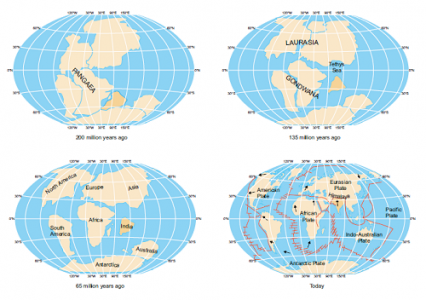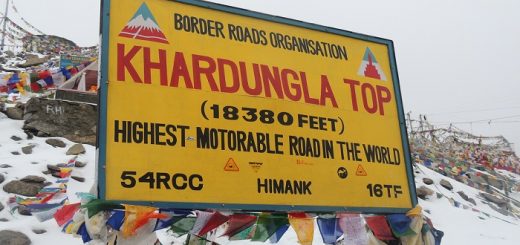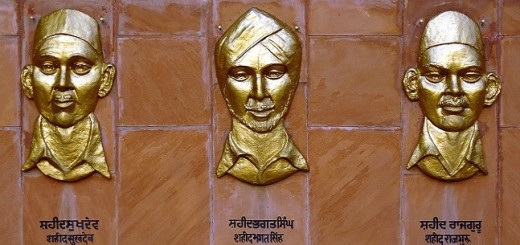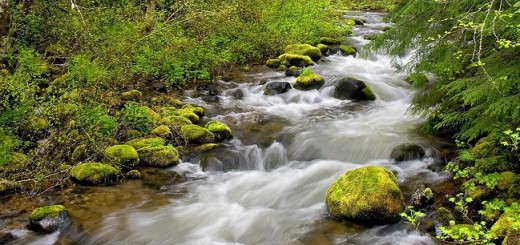King of Mountains: The Himalaya Mountain
Himalaya Mountain is a range of young fold mountains that stretches for nearly 2400km in the northern part of India. Himalayan Mountain is home to the world’s largest peak Mount Everest and separates the Indian subcontinent from rest of Asia, it is the source of some of the largest river system on earth and has almost all the highest peaks of the earth. It is one of the longest and highest mountain ranges in India. From ancient times the Himalayas have played a very vital role in India’s climate, culture and traditions many of the peaks sacred to Hinduism and Buddhism are located in this range and it is central to various Hindu mythology. In Hindi Himalayas is known as “Giri Raj” meaning King of Mountains while “Himalaya” is a Sanskrit word meaning “Adobe of Snow”.
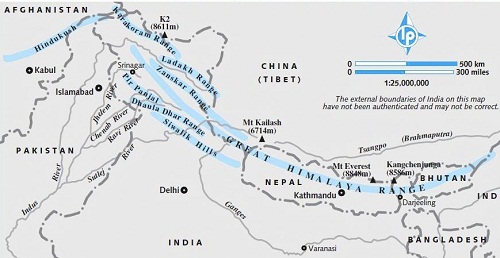
From Jammu & Kashmir to Arunachal Pradesh in India it covers an area of 595,000 sq. kmArunachal00km length and width vary from 150km to 400km. Nanga Parbat in Jammu & Kashmir acts as its western anchor and Namcha Barwa in Arunanchal Pradesh as its eastern anchor. Mountain range of the Hindu Kush and the Karakoram also surrounds it from the north-western end. In the north, it is surrounded by Tibetan Plateau and in the south by great Gangetic plains. During its entire length is crosses five countries India, Nepal, Bhutan, Pakistan, and China but the share of former three is very large in comparison to the later two. The Himalayan range is the source to rivers like Ganges, Indus, and Brahmaputra, almost all type of climate and vegetation is found here and it plays a very important role in the climate of India by preventing cold winds to enter in the northern part of India and preventing Monsoon winds to blow away from India. Mount Kailash located in the Tibetan part of Himalayas is a sacred peak to both Hindus and Buddhists.
Qucik Navigate:
Origin and Present State Of The Himalayas
The Himalaya Mountain was formed due to the collision of the Eurasian plate with Indian plate some 65 million years ago and huge landmass uplifted during this process led to the formation of the Himalayan Mountain range. So the Himalayan range belongs to one of the youngest mountain ranges of the world and it is still growing with approx. 5-7 mm every year. Since the Indian plate is still moving this region is highly prone to earthquakes and volcanic eruptions. This mountain range has almost all the highest peaks in the world and gorges formed are some of the deepest, excluding K2 Peak which is in Karakoram Range all top ten peaks of the world come under Himalayan range.
Classification of Himalayas
Though there is no standard method for classification of Himalaya Mountain Range but for the purpose of better study they can be categorized into western, central and eastern Himalayas. The Himalaya Mountain Range can also be classified on the basis of height and they are as follow
- Outer or Sub-Himalayas (The Siwalik Range)
- Lesser or Lower Himalayas (The Himanchal Range)
- The Great Himalayas (The Himadri Range)
Sometimes one more classification is added by including Tibetan Himalayas which include the southern edge of Tibetan Plateau. Western Himalayas include the area of Jammu & Kashmir, Pir Panjal, Ladakh and Baltistan, and Gilit region. The central Himalayas extends from Jammu & Kashmir to Sikkim and includes the area of Himachal, Garhwal, Punjab, and Nepal. The eastern Himalayas extend from Sikkim to Assam and include the part of the range running in Bhutan, Arunachal Pradesh and Assam.
Source of Fresh Water/Rivers
The Himalaya Mountain range is the source of some of the largest rivers in India as well as in the world. It is also the largest source of fresh water on earth after the Polar Regions. After Antarctica and Arctic, it has the third-largest deposit of ice and snow on earth. It contains some of the largest glaciers in the world and count goes as high as 15000 glaciers including Gangotri and Yamunotri glaciers. Rivers originating from Himalaya Mountain are perennial and they have water for almost every part of the year. Almost one-fifth of the world population depends on water from the Himalayan system. Himalayas Basin is drained by nearly 19 rivers and they can be grouped into three major river systems of Ganges, Indus, and Brahmaputra. Apart from rivers, the Himalayan range has a large number of freshwater lakes. Some important lakes include Tilicho, Pangong Tso, and Yamdrok Tso Lake.
Also Read: A Bike Ride To Two Biggest Lakes In Ladakh
Flora & FaunaIn The Himalayas
Himalayan animal life and vegetation is very rich and a wide variety of plants and animals can be found there. The type of plant life changes with the change in height of mountain range from tropical to alpine, and so is the case with animal life. Eastern Himalayas is densely covered with forest range due to 2 factors 1: They are smaller in elevation as compared to western counterparts and 2: They get a huge amount of rainfall due to monsoon winds. In the western Himalayas predominantly Deodar, Sal trees are found. The animal life varies with elevation and elephants and rhinoceroses are found in the lower Himalayan region also called Terai Region. Other important animals found are Kashmiri Stag, Black Bear, Langur, Musk Dear, snow leopards, and Tibetan Yak. Yak is mostly domesticated and used as a means of transportation. Many animals found in the Himalayan region are on the verge of extinction and they need to be taken proper care.
Impact Of Himalaya on Indian Climate
The Himalayas play a very important role in regulating the climate of the Indian sub-continent. The cold wind blowing from the northern part of Asia is being stopped by mountains and thus the Indian subcontinent remains warm. They force Monsoon winds to shed their water inside India’s territory and thus these areas receive some of the highest rainfall in the world. As the windward side of the mountain doesn’t get enough rainfall we can see that there has been the desert in those areas like the Gobi and Taklamakan Desert.
Also Read: A Bike Ride to Badrinath Temple in the Himalayas
The Himalayas As The Centre of Religion
Many of Himalayan peaks are sacred to both Hinduism and Buddhism, at there are sites that are sacred to religions like Sikhism, Jainism. In Hindu mythology Himalayas is regarded as the father of River Ganges and Goddess Parvati. In Buddhism, Paro Taktsang is a holy site where Buddhism was started in Bhutan. There are many Buddhist Monasteries, mosque and temples are situated and are home to Dalai Lama. In lower Himalayas, some important cities are situated that are central to Hinduism. Mount Kailash is a very sacred peak and it is said that no one is allowed to climb this peak. In Hinduism, it is assumed that Lord Shiva resides on Mount Kailash.
Mountain Passes in the Himalayas
There are many passes in the Himalayas that helps in quick connectivity. Passes in the Himalayas are amongst the highest in the world they are covered by snow for almost half of the year they are accessible in the months of summer between March to August. Some Important passes include Banihal Pass, Rohtang Pass, Mana Pass, and Gangtok Pass.
Also Read: List of important Passes situated in the Himalayas
The Himalayas As The Center of Tourism
The Himalayas is the center of tourism for the entire world and attracts thousands of tourists due to its natural beauty. Many important tourist stations are situated in the Himalayas like Shimla, Manali, Nainital, Binsar, Srinagar, etc. The Himalayas offers some of the dangerous roads in the world and it is heaven for bikers. Leh-Ladakh, Spiti Valley is the main biking center where tourists undergo a long and treacherous bike ride to enjoy the beautiful Himalayas. Many famous national parks lie in its ambit which provides great trekking routes and allows nature lovers to enjoy nature’s flora and fauna.

